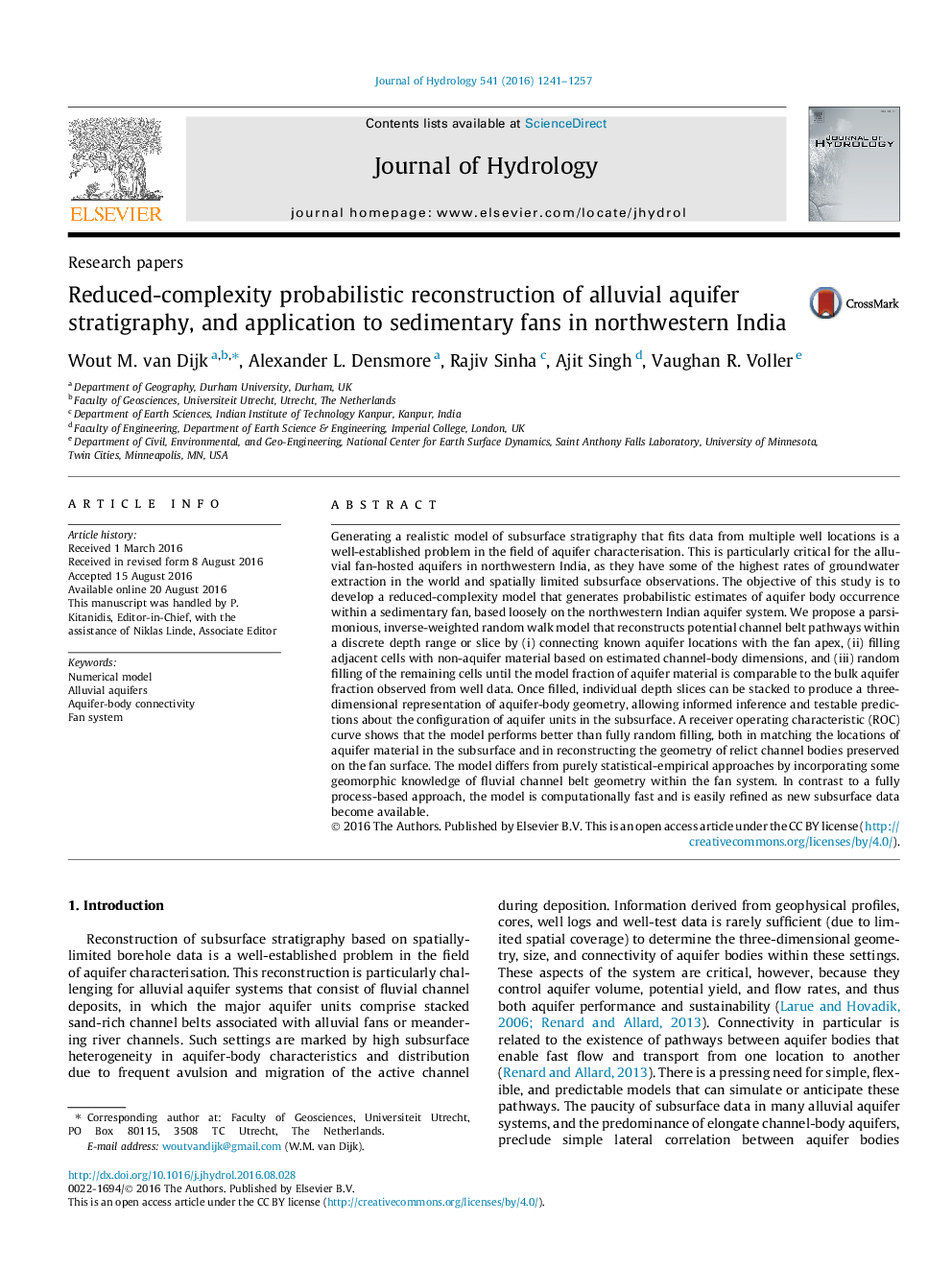| کد مقاله | کد نشریه | سال انتشار | مقاله انگلیسی | نسخه تمام متن |
|---|---|---|---|---|
| 6409472 | 1332870 | 2016 | 17 صفحه PDF | دانلود رایگان |
- A new reduced complexity model reproduces simplified fluvial stratigraphy within a fan system.
- The model improves forecasting of aquifer body locations compared to random filling.
- The model provides testable predictions of the location and distribution of aquifer bodies in the subsurface.
Generating a realistic model of subsurface stratigraphy that fits data from multiple well locations is a well-established problem in the field of aquifer characterisation. This is particularly critical for the alluvial fan-hosted aquifers in northwestern India, as they have some of the highest rates of groundwater extraction in the world and spatially limited subsurface observations. The objective of this study is to develop a reduced-complexity model that generates probabilistic estimates of aquifer body occurrence within a sedimentary fan, based loosely on the northwestern Indian aquifer system. We propose a parsimonious, inverse-weighted random walk model that reconstructs potential channel belt pathways within a discrete depth range or slice by (i) connecting known aquifer locations with the fan apex, (ii) filling adjacent cells with non-aquifer material based on estimated channel-body dimensions, and (iii) random filling of the remaining cells until the model fraction of aquifer material is comparable to the bulk aquifer fraction observed from well data. Once filled, individual depth slices can be stacked to produce a three-dimensional representation of aquifer-body geometry, allowing informed inference and testable predictions about the configuration of aquifer units in the subsurface. A receiver operating characteristic (ROC) curve shows that the model performs better than fully random filling, both in matching the locations of aquifer material in the subsurface and in reconstructing the geometry of relict channel bodies preserved on the fan surface. The model differs from purely statistical-empirical approaches by incorporating some geomorphic knowledge of fluvial channel belt geometry within the fan system. In contrast to a fully process-based approach, the model is computationally fast and is easily refined as new subsurface data become available.
Journal: Journal of Hydrology - Volume 541, Part B, October 2016, Pages 1241-1257
